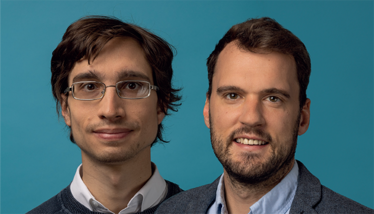Modelling The Future Of Lyophilization
Academia suggests we need to upgrade lyophilization, but scientists are being slow to respond
Brecht Vanbillemont, Andrea Arsiccio | | 3 min read | Opinion

Many variables determine the success (or failure) of a given lyophilization process; for instance, the selected process parameters need to meet specific criteria that depend on both the material being lyophilized, the container closure system, and freeze-drying equipment. Selection of parameters is made even harder by the nature of the lyophilization process itself. During lyophilization, mass transfer via sublimation or desorption is tightly interconnected with heat transfer via contact, conduction, and radiation – and the whole process occurs at a very low vacuum in which traditional ambient-pressure laws no longer apply.
To identify governing rules within this system, academic researchers developed mechanistic models of the freeze-drying process that date back to the 1980s (1). Most efforts in this direction focused initially on the second (and longest) phase of lyophilization: primary drying, where ice is removed via sublimation at low vacuum conditions. However, mathematical models have also been developed for the other stages of lyophilization: freezing and secondary drying.
The complexity of the models published in the literature vary widely. The simplest ones make use of energy and mass balance equations, and do not dive into complex considerations about the molecular mechanisms of heat and mass transfer. Instead, they hide this difficulty inside empirical heat and mass transfer coefficients, which can be measured experimentally.
Other models make use of computational fluid dynamics to describe the gas flows during freeze-drying. In all cases, models provide an extremely useful guidance for the scientist involved in lyophilization process development and optimization, offering rationale for the selection of process parameters. In this sense, lyophilization process models comply with the quality-by-design principle and allow a robust determination of relationships between input and output variables.
Despite the clear advantages of modeling for lyophilization process optimization and their widespread use in academic circles, their adoption by pharmaceutical manufacturing companies is still limited. Steps have been made in recent years to support adoption and implementation (2,3), but resistance remains. Why is this? From a regulatory perspective, lyophilization models can help avoid common manufacturing-related deficiencies in submissions (4). They can guide scientists in their selection of process parameters, and offer a rationale to justify the decisions made in regulatory submission. So, regulations cannot be blamed. Based on our experience, the main reasons for delayed adoption are the lack of personnel with adequate expertise in modeling and the conservative mindset that still characterizes the world of pharmaceutical manufacturing.
Several case studies have already shown the advantages of applying models in lyophilization process optimization. From our end, we are contributing to the field by building up knowledge and providing new case studies for application of lyophilization models (5). We are also in the progress of applying those models in lyophilization development for pharmaceutical drug products of our clients. Our experience in the field of lyophilization process development and optimization clearly shows the benefits of models over the traditional trial and error approach. The huge amount of knowledge about the process that is generated through the application of modeling holds clear advantages when compared with the traditional approach.
The number of case studies showing benefits of models has reached a critical mass. In our view, it is time to be brave and make a step forward in their application also within the pharmaceutical industry. All together, we can make this real and move into a quality-by-design approach, as opposed to a “quality-by-accident” concept.
- MJ Pikal, “Use of Laboratory Data in Freeze Drying Process Design: Heat and Mass Transfer Coefficients and the Computer Simulation of Freeze Drying,” PDA Journal of Pharmaceutical Science and Technology 39, 115 (1985). PMID: 3839016.
- S Tchessalov et al., “Application of first principles primary drying model to lyophilization process design and transfer: Case studies from the industry,” J Pharm Sci, 110, 968 (2021). PMID: 33248058.
- F Jameel et al., “Recommended best practices for lyophilization validation—2021 Part I: Process design and modeling,” AAPS PharmSciTech, 18, 221 (2021). PMID: 34409506
- SY Rhieu et al., “A regulatory perspective on manufacturing processes pertaining to lyophilized injectable products,” AAPS J 22, 100 (2020). https://doi.org/10.1208/s12248-020-00477-6
- B Vanbillemont et al., “A model-based optimization strategy to achieve fast and robust freeze-drying cycles,” Int J Pharm, 5, 180 (2023). PMID: 37125084
Senior Scientist and currently serving as a leading expert in lyophilization at Coriolis Pharma, based in Munich, Germany.
Senior Scientist at Coriolis Pharma, where he works on projects dealing with the development of lyophilized formulations, lyophilization process development and the implementation of innovative modeling concepts.



















